Artificial Turf in the Winter: 6 Things To Consider When Ordering Turf this Winter
Published November 27, 2023
“Pro Tip: Having adequate moisture in the air, will not only improve the turf, be easier to install, but will also help your athletes breathe easier and prevent chapped lips….Your players, coaches and parents will thank you.”
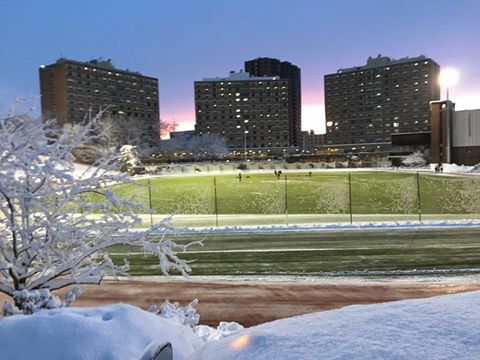
While it is perfectly fine to order and install turf in the colder months, you may want to allow more time ahead of the delivery and installation. None of these obstacles are insurmountable, but if your facility has scheduled a hard Grand Opening date, or you are just anxious to get the turf installed, you need to pad your timetable adequately.
Here are 6 Things to Consider:
- Turf Delivery Times can take Longer
- Parking Lots & Driveways Can Be Icy
- Your Artificial Turf will be Colder than Normal
- Artificial Turf Glue will take Longer to Cure
- Static in Turf is a Bigger Problem in the Winter in Indoor Facilities
- Can you use a Snow Plow on Artificial Turf?
- Turf Delivery Times can Take Longer
Even the best freight companies will be delayed during winter storms. If it typically takes 5 business days for freight to get to Michigan, for example, ice and snow can inevitably delay freight routes by several days until it clears up. So, while our standard delivery times are roughly within a week, by the time you order the turf and it ships out, unforeseen weather conditions can prevent the turf from making it the “last mile,” especially in more remote areas where it can take longer for roads to clear.
2. Parking Lots & Driveways Can Be Icy
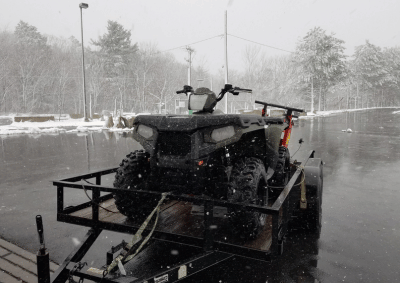
Freight drivers will become impatient and that’s when delay fines begin. These can sometimes be $100 an hour depending on the freight company.
Read More on Unloading Turf from Freight Trucks here.
3. Your Artificial Turf will be Colder than Normal

You can read our other articles for more details on installing turf, but you typically want the turf to rest and settle once it is unrolled before making your cuts and gluing your seams. When turf comes off the manufacturing line, it is heated when the urethane backing is applied and typically needs to sit for 24 hours. Some turf manufacturers even have a rule that they won’t ship turf until 48 hour after it’s made. We like to use the analogy of getting a shirt back from the cleaners with heavy starch. The turf will be very stiff at first, but once it’s laid and gets a bit of wear and heat, it will go limp, and be easier to manipulate. It will also expand. We’ve seen cases where we laid and positioned the turf one day in the winter, and came back the next morning to see that it “grew” up the dasherboards of a former hockey rink by 6 inches.
Read More About Turf Installation here.
4. Artificial Turf Glue Can take Longer to Cure
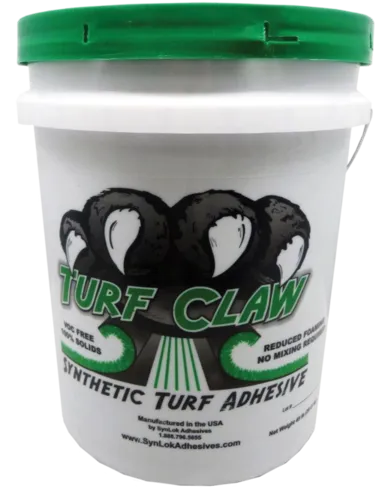
Activity on the turf before the seams are dry can be disastrous and set you back a week. Seams will separate and create wrinkles in the turf. You’ll have to rip off the fabric, order more glue and start all over again. So allow more time for your glue to cure when it is colder. Ideal temperatures for glue application are usually written on the glue buckets or tubes themselves.
Read More About Turf Glue in this Article.
5. Static in Turf is a Bigger Problem in the Winter in Indoor Facilities
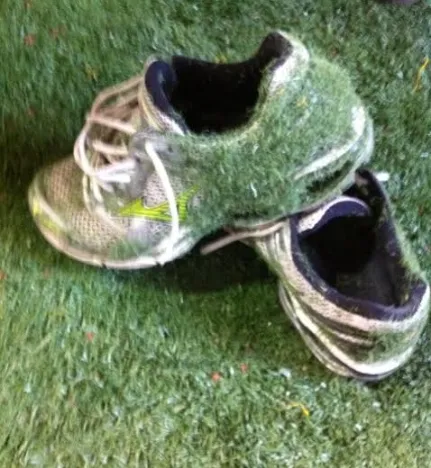
We highly recommend introducing some level of moisture and humidity in the air. Whether that’s with a more expensive humidifier component added to your heater, or simply acquiring stand alone humidifiers in your building. This will help reduce the amount of static in the turf and be more comfortable all around for players and parents.
In a pinch, you can lightly spray the surface with water to immediately introduce moisture. Eliminating the static and dry air, will also reduce the amount of “dust” flying around in the air, especially if you have a rubber infill in your turf.
Pro Tip: Having adequate moisture in the air, will not only improve the turf, but will also help your athletes breathe easier and prevent chapped lips.
Read more in our Article here.
6. Can you use a Snow Plow on Artificial Turf?
Yes, but very carefully. We’ve all seen turf get plowed during wintry NFL halftimes. But those guys are professionals.
There are 2 problems.
Wheels On the Turf
You generally want to avoid driving anything with wheels on the turf. This is why we recommend hanging your nets before laying your turf.
But sometimes its unavoidable. In our netting replacement jobs, we have no choice but to drive a scissor lift on the existing turf. You just have to be really careful and not go too fast, or turn the wheels too quickly. The wheels can spin and burn tire marks in your turf and there’s no easy way to fix it, without doing a full re-patch. On thinner, loose-laid turf surfaces, the wheels can even twist the turf, creating wrinkles.
You need to drive very slowly and carefully.
The Snow Plow Itself
The Plow must be positioned at exactly the right height. If the edge or corner nicks a seam or logo it will tear the turf. If your not paying attention and don’t see this happening right away, you can easily end up with big torn stretches which will have to be repaired.
Otherwise, there is nothing inherently wrong with using a snow plow on artificial turf fields. Folks in the northeast do it all of the time.
If you are ready to order turf this winter, don’t let hesitate to call ATXTurf and get it on the way!
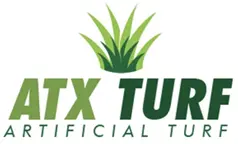
0 Comments